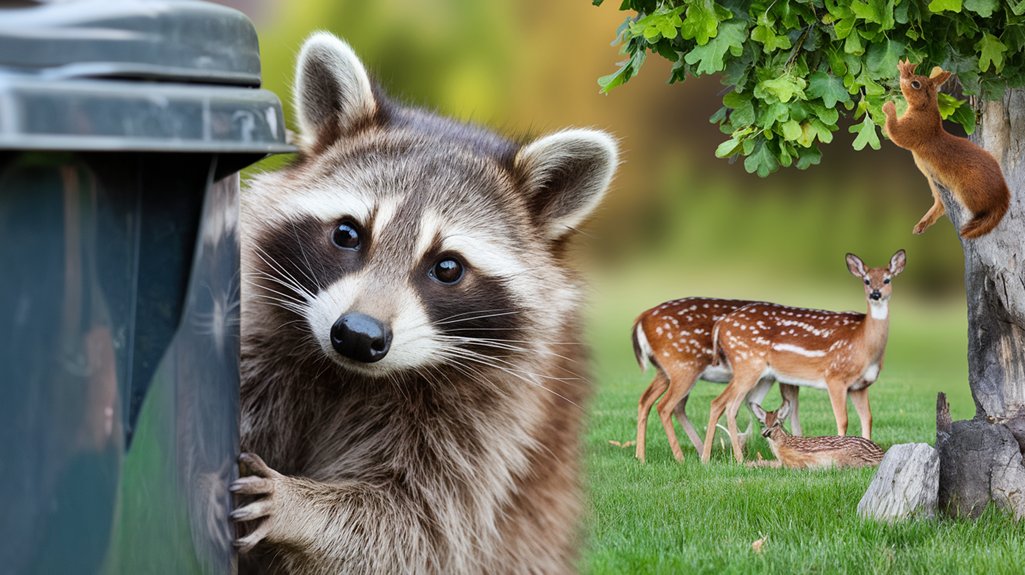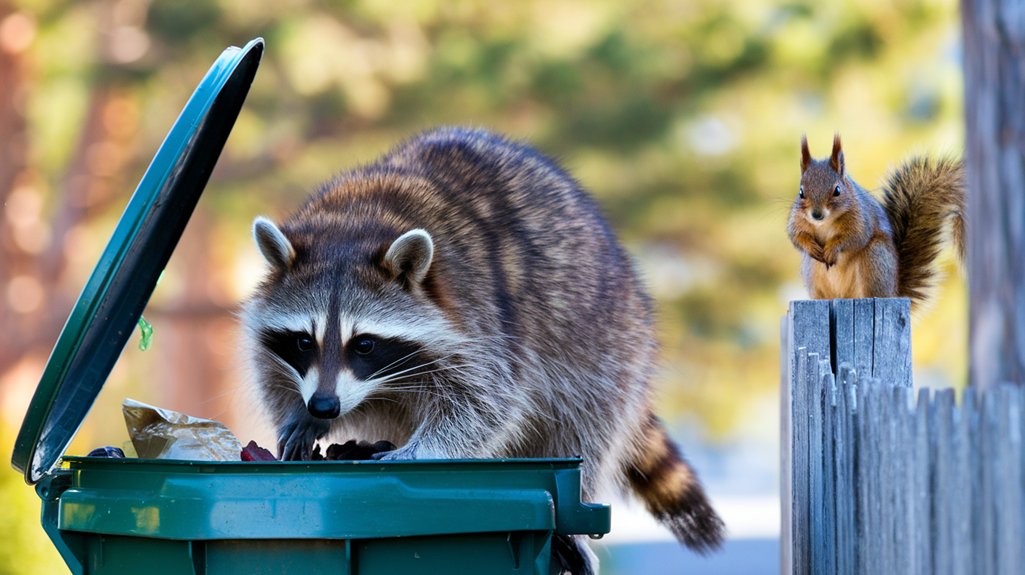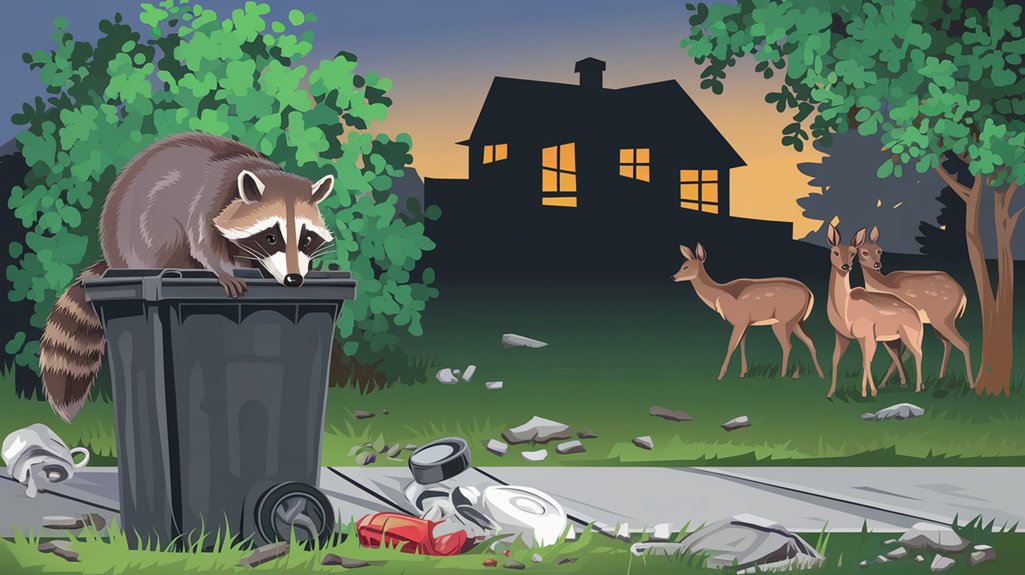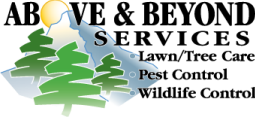In Colorado, nuisance wildlife like squirrels and raccoons can disrupt your peace and property. These animals often invade your space, especially during their active hours at dawn and dusk. Understanding their behaviors can help you take preventive measures. But what exactly should you do to keep them at bay? Discovering effective strategies and knowing when to call for help can make all the difference in managing these unwelcome guests.
Key Takeaways
- Colorado's common nuisance wildlife includes squirrels and raccoons, both known for raiding food sources and causing property damage.
- Understanding their behaviors, such as foraging times and seasonal activities, aids in predicting and managing their presence.
- Habitat modification, like trimming trees and sealing entry points, effectively reduces wildlife encounters around homes.
- Regular maintenance of barriers and trash bins is crucial to deter wildlife from invading residential areas.
- Seek professional help when signs of infestation are evident or if wildlife poses health risks or legal concerns.
Common Nuisance Wildlife in Colorado

When you explore the great outdoors in Colorado, you might encounter some common nuisance wildlife that can disrupt your activities.
Squirrels are often seen darting around, their behavior can lead to raiding your picnic or rummaging through your belongings. They're agile and curious, eager to investigate anything that piques their interest.
Raccoons, on the other hand, are notorious for their habits of scavenging and getting into trash. Their dexterous paws make it easy for them to open containers, making them a challenge for campers and hikers alike.
Understanding these animals can help you minimize their impact on your outdoor experience. Keeping your food secure and trash sealed can go a long way in deterring these clever critters.
Understanding Their Behaviors

To effectively manage nuisance wildlife in Colorado, it's crucial to understand their behaviors. Each species exhibits unique behavioral patterns that can help you anticipate their movements and activities.
For instance, many animals are more active during dawn and dusk, seeking food while avoiding predators. Seasonal activities also play a significant role; for example, raccoons are known to forage for food during late summer and fall to prepare for winter hibernation.
In contrast, squirrels may be seen gathering nuts in the autumn, which can lead them closer to human habitats. By observing these behaviors, you'll be better equipped to prevent unwanted interactions and develop effective management strategies tailored to the specific wildlife in your area.
Potential Issues Caused by Nuisance Wildlife

Nuisance wildlife can create a range of issues that affect both your property and daily life, especially if their presence goes unchecked. These animals can cause significant property damage, tearing up insulation, chewing through electrical wires, or even collapsing structures.
If you've noticed signs of wildlife intrusion, don't ignore them; the longer you wait, the worse the damage can become.
Additionally, nuisance wildlife poses health risks. They can carry diseases like rabies and hantavirus, which can spread to pets and humans.
Their droppings can contaminate food sources and living areas, leading to further health concerns. Staying vigilant and addressing wildlife issues promptly is essential to safeguarding your home and the well-being of your family.
Effective Strategies for Prevention
While it's important to address problems caused by wildlife, taking proactive steps can significantly reduce your chances of encountering them in the first place. Implementing effective habitat modification and exclusion techniques is key.
| Strategy | Description |
|---|---|
| Habitat Modification | Trim trees, remove debris, and seal entry points to make your property less inviting. |
| Exclusion Techniques | Install fences, use screens on vents, and secure trash bins to deter wildlife. |
| Regular Maintenance | Check and maintain barriers regularly to ensure they remain effective. |
When to Seek Professional Help
How do you know when it's time to call in the experts for wildlife issues?
You should consider seeking professional help when you notice clear signs of infestation, like scratching noises in your walls, droppings, or chewed wires.
If you're uncertain about what type of wildlife is invading your space, that's another reason to intervene.
Wildlife can pose risks to your health and property, and some species may require special handling due to legal regulations.
If the problem escalates, and you can't manage it on your own, don't hesitate to reach out for professional assistance.
They've the tools and expertise to handle these situations safely and effectively, ensuring your home is protected and your peace of mind restored.
Frequently Asked Questions
What Are the Legal Protections for Nuisance Wildlife in Colorado?
In Colorado, wildlife laws protect certain species, requiring you to obtain legal permits before taking action against them. Always check local regulations to ensure you're compliant when dealing with nuisance wildlife in your area.
Can I Relocate Nuisance Wildlife Myself?
You can't relocate nuisance wildlife yourself. Instead, consider contacting a professional for wildlife trapping. They'll ensure humane relocation, complying with local laws and protecting both you and the animals involved in the process.
Are There Specific Seasons for Wildlife Activity in Colorado?
Yes, there are specific seasons for wildlife activity in Colorado. You'll notice increased seasonal behavior during spring and fall when animals search for food or mates, making it crucial to stay alert during these times.
What Attracts Nuisance Wildlife to My Property?
Nuisance wildlife is drawn to your property by available food sources and shelter options. If you leave pet food outside or have clutter, you might unintentionally invite them to settle in nearby.
How Can I Safely Coexist With Nuisance Wildlife?
To safely coexist with nuisance wildlife, you can implement wildlife coexistence strategies like securing trash and using humane deterrent methods. These approaches help maintain a peaceful environment while respecting the natural habits of local animals.
Conclusion
In conclusion, understanding Colorado's nuisance wildlife, like squirrels and raccoons, is key to effective management. By recognizing their behaviors and potential issues, you can take proactive steps to deter them. Securing trash, sealing entry points, and modifying your surroundings are simple yet effective strategies. If you do face an infestation, don't hesitate to reach out to professionals for help. Staying informed and proactive will keep your home safe from these agile scavengers.
